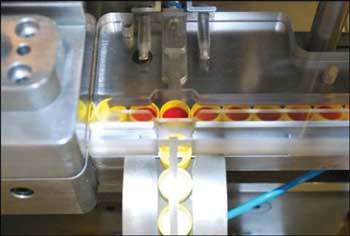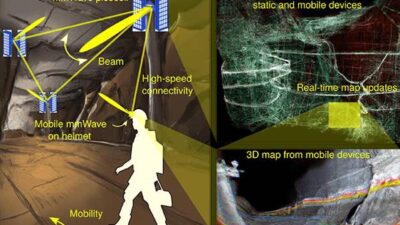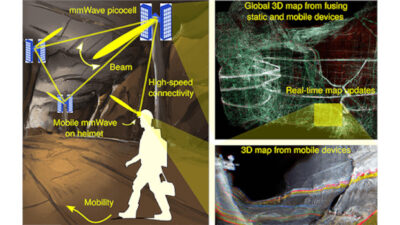To determine whether discrete or vision sensors will be the most robust and cost-effective way to error proof a parts production, look at the level of complexity in the sensing required. See photo gallery and checklist: 8 ways to choose between machine vision or sensors.

Terms like total quality management, lean manufacturing, error proofing, and Poka Yoke have been used to describe programs that are designed to drive out errors and defects in the manufacturing process. Today, most effective error proofing programs use sensors to eliminate errors as an integral part of the manufacturing process. Sensors error proof each manufacturing step to prevent production of out-of-spec parts by checking each step and either eliminating a part produced out of tolerance or stopping the process when necessary. (At bottom of this file, see the checklist, "At a glance: 8 ways to choose between machine vision or sensors.")
No one can deny that using sensors to error proof a manufacturing process is the most effective method. However, the question remains, when would it make sense to use a vision-based sensor instead of discrete sensors? Now that vision sensors have increased functionality and lower cost and complexity, this is a more difficult question, especially when trying to maximize benefits without cost overkill. It’s also an important choice for production lines that manufacture multiple products. The information below will examine the uses for sensors and vision sensors and provide a guide on which may work best.
Most discrete sensor-driven error proofing works best when a manufactured part can be automatically positioned for inspection exactly the same way. If this is the case, sensors can be aimed to verify a specific aspect of the part, which serves as an indicator that the manufacturing step was done correctly. This calls for sensors stationed all along the line to make their individual inspections at the key points of production; the sensors will catch an error as soon as possible, before additional value is added or multiple defective parts are created. Often, this means that several sensors must be placed at the same location for simultaneous inspections, creating an array of sensors.
Vision sensor methodology can inspect parts in various positions relative to the camera and inspect more than one attribute simultaneously, including appearance, presence/absence, dimensional, and positioning. Like discrete sensors, vision sensors are now designed to be positioned all along the line to make these inspections. So where does it make the most sense to use a vision sensor instead of discrete sensors? There are a few ways to look at this for answers, but here are some of the most important considerations.
Complexity factor
At first glance, these technologies seem to be at polar opposites in complexity and capability. In reality, they are just at different levels of sensing capability. Sensor-driven error proofing is typically limited to discrete functionality based on a specific technology. This includes photoelectric sensing, inductive/capacitive proximity sensing, or laser-based sensing. These sensing methods work ideally if a repeatable part type and position are used because little or no adjustment is required and repeatability is assured. Discrete sensors are also inexpensive solutions and require little application expertise. When few detection points are required at a given inspection point and part position repeatability is a part of the process, discrete sensors are usually the way to go.
Vision sensors typically provide multitask sensing, involving many simultaneous sensing methods or algorithms that can perform similar sensing operations as discrete or analog sensors, but in one device. So, as the level of sensing requirements increases at a given inspection point, especially to the point of requiring a sensing array, a vision sensor makes more sense because it can reduce sensing and mechanical complexity and sometimes cost, while improving reliability. The vision sensor can be a solution for applications that do not have tight part fixturing. It is also a good choice when different parts are run on the same line and require line configuration changes that would seriously hamper sensor arrays or require significant changeover or planned downtime to move the sensors in flexible or build-to-suit manufacturing.
The simplest answer lies in the complexity of the part-sensing application or the type of line. Discrete sensors and vision sensors should be compared on a sliding scale of capability, but not always by complexity. In this way, matching the device to the error proofing needed need not be significantly more complex than matching the level of performance in the sensor itself. It’s like choosing the right vehicle to drive based on your load—a car for just people, or a van for a wider variety of contents, for example. Likewise, ensure the sensor best fits the application.
Case study: Medical vials
A medical vial manufacturing application shows why a vision sensor was chosen over discrete sensors. The medical vial manufacturer produces caps with foil and paper liners inserted into different size and color caps to seal glass medical sample vials. They can produce 100 vials and caps per minute with two shifts, five days a week. There are 100 to 200 vials per case. The company had used manual inspection to error proof cap production when volumes were much lower. For increased volumes, they needed automated inspection with in-line rejection to manage the planned downtime for setup of different cap types. They also needed to minimize unplanned downtime if cap liners were not properly cut or inserted in the cap. One bad cap found by the end customer would cause rejection of an entire case of caps and vials, costing more than $200 in additional product, shipping, and manual re-inspection.
The first four images illustrate the good and defective versions of different caps and the inspections being used by a vision sensor to provide 100% error proofing of each cap before proceeding to bagging and casing. These inspections would have been possible without vision sensors, but would have required a sensor array and much greater mechanical complexity for line changes to each cap type.
Because of the variations of cap materials and colors, using discrete sensors would be difficult and require mechanical adjustment every time a new cap type was run. Using a vision sensor allows them to minimize changeover time to milliseconds while providing 100% inspection and completely eliminate manual inspection and product case rejections by customers. Photos five and six show the in-line error proofing and reject station.
To determine whether discrete or vision sensors will be the most robust and cost-effective way to error proof a parts production, look at the level of complexity in the sensing required. If parts are fixtured and error proofing involves the same part type, discrete sensing typically makes the most sense. But if the line involves multiple discrete sensing methods or sensor arrays, sensors requiring constant adjustment, limited part fixturing, flexible manufacturing, product line changeovers, and multiple parts run on the same line, consider using a vision sensor instead.
At a glance: 8 ways to choose between machine vision or sensors
Mark Sippel, product marketing manager at Balluff Inc., suggests:
- Most discrete sensor-driven error proofing works best when a manufactured part can be automatically positioned for inspection exactly the same way.
- Vision sensor methodology can inspect parts in various positions relative to the camera and inspect more than one attribute simultaneously, including appearance, presence/absence, dimensional, and positioning. Like discrete sensors, vision sensors are now designed to be positioned all along the line to make these inspections.
- Sensor-driven error proofing with photoelectric sensing, inductive/capacitive proximity sensing, or laser-based sensing work ideally if a repeatable part type and position are used because little or no adjustment is required and repeatability is assured.
- Discrete sensors are also inexpensive solutions and require little application expertise.
- When few detection points are required at a given inspection point and part position repeatability is a part of the process, discrete sensors are usually the way to go.
- Vision sensors typically provide multitask sensing, involving many simultaneous sensing methods or algorithms that can perform similar sensing operations as discrete or analog sensors, but in one device.
- As the level of sensing requirements increase at a given inspection point, especially to the point of requiring a sensing array, a vision sensor makes more sense because it can reduce sensing and mechanical complexity and sometimes cost, while improving reliability.
- The vision sensor can be a solution for applications that do not have tight part fixturing or applications that require significant changeover or planned downtime to move the sensors in flexible or build-to-suit manufacturing.
Mark Sippel is a product marketing manager at Balluff Inc., Florence, Ky.
www.controleng.com/machinevision
Also see: Vision and Discrete Sensors.



